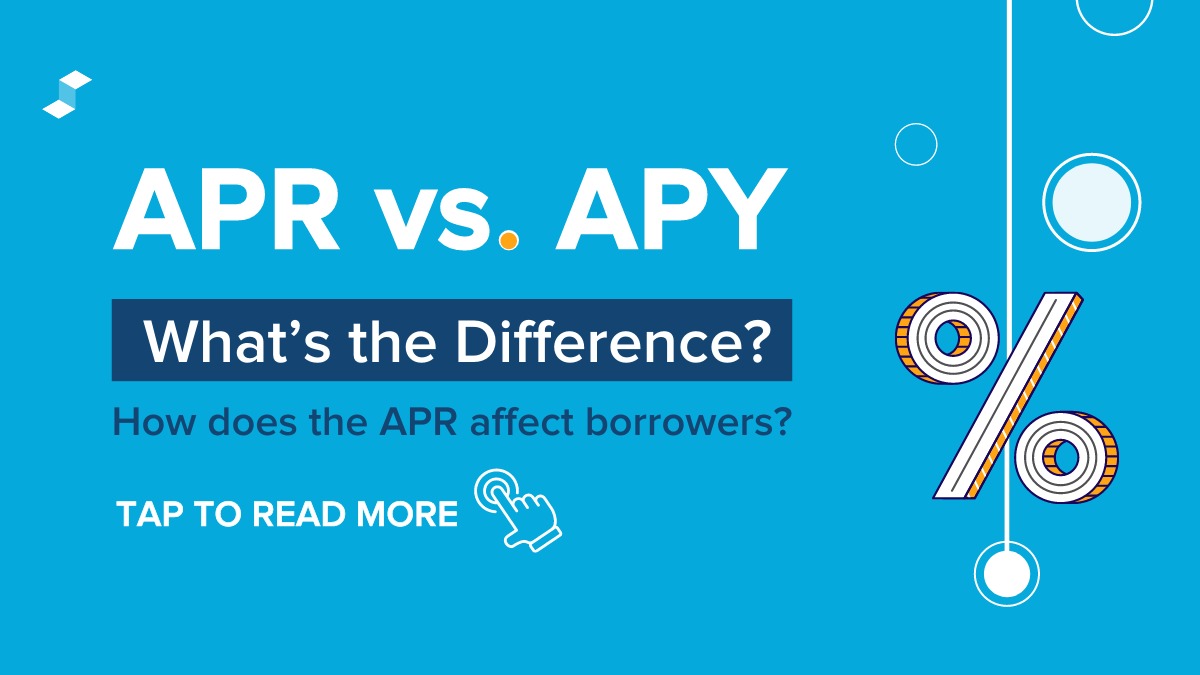Home>Finance>What Is The Difference Between Dividends And Interest


Finance
What Is The Difference Between Dividends And Interest
Published: January 3, 2024
Learn the key distinction between dividends and interest in finance. Understand how these terms impact investment strategies and returns.
(Many of the links in this article redirect to a specific reviewed product. Your purchase of these products through affiliate links helps to generate commission for LiveWell, at no extra cost. Learn more)
Table of Contents
- Introduction
- Definition of Dividends
- Definition of Interest
- Key Differences between Dividends and Interest
- Purpose of Dividends
- Purpose of Interest
- Sources of Dividends
- Sources of Interest
- Tax Treatment of Dividends
- Tax Treatment of Interest
- Risk Associated with Dividends
- Risk Associated with Interest
- Calculation and Payment of Dividends
- Calculation and Payment of Interest
- Comparison of Dividends and Interest
- Conclusion
Introduction
Finance is a vast field that encompasses various aspects of managing money and investments. When it comes to generating income from investments, dividends and interest are two common terms that often come up. While they both involve receiving payments, there are significant differences between dividends and interest.
In this article, we will explore the distinctions between dividends and interest and how they play a role in the world of finance. Whether you are a seasoned investor or just starting to dip your toes into the financial world, understanding these concepts can help you make informed decisions and navigate the complexities of investing.
So, let’s dive in and discover the key differences between dividends and interest, their purposes, sources, tax treatment, associated risks, and how the calculation and payment of each are carried out. By the end of this article, you will have a comprehensive understanding of both dividends and interest, enabling you to make better investment choices and optimize your financial outcomes.
Definition of Dividends
In the world of finance, dividends refer to a portion of a company’s earnings that are distributed to its shareholders. When a company makes a profit, it has the option to keep the earnings within the business for reinvestment or to distribute them to its shareholders in the form of dividends. Dividends are typically paid out in cash, but they can also be issued as additional shares of stock or other types of assets.
Dividends are commonly associated with stocks or equities, as they are a way for shareholders to receive a share of the company’s profits. However, not all companies pay dividends. It is a decision made by the company’s management and may be influenced by factors such as the company’s financial performance, growth prospects, and the industry in which it operates. Companies that pay dividends are often well-established and financially stable.
Dividends can be categorized into two main types: regular dividends and special dividends. Regular dividends are typically paid quarterly or annually and are based on the company’s ongoing earnings. Special dividends, on the other hand, are one-time payments that are usually made when the company experiences exceptional financial success, such as a large increase in profits or a successful merger or acquisition.
The amount of dividends paid to shareholders is determined by the company’s dividend policy and the number of shares owned by each shareholder. Dividends are often expressed as a per-share amount, such as “$0.50 per share”. So, if you own 100 shares of a company that pays a $0.50 dividend per share, you would receive $50 in dividends.
It’s important to note that not all shareholders may receive the same amount of dividends. Shareholders who own more shares will receive a higher proportion of the total dividends paid by the company. This is why dividends are often favored by long-term investors who hold a significant stake in a company.
Definition of Interest
In the realm of finance, interest is the cost or price paid for the use of borrowed money or the return earned on an investment. It is essentially the compensation that one party receives for lending money to another or the earnings accrued on funds invested in a financial instrument.
Interest can be seen as the “rent” paid on borrowed money or the “reward” for lending money to someone else. It serves as an incentive for both borrowers and lenders to engage in financial transactions and plays a crucial role in the functioning of the financial system.
When borrowing money, individuals or businesses incur interest expenses, which are typically calculated as a percentage of the loan amount or principal. The interest rate represents the cost of borrowing and is determined by various factors such as prevailing market rates, creditworthiness of the borrower, and the duration of the loan.
On the other hand, when investing, individuals or entities earn interest income on their invested funds. This can be in the form of interest earned on savings accounts, certificates of deposit (CDs), bonds, or other types of fixed-income securities. The interest rate received is often determined by the prevailing market rates and the risk associated with the investment.
Interest rates can be fixed, meaning they remain constant throughout the duration of the loan or investment, or they can be variable, meaning they fluctuate based on changes in market conditions or benchmark rates. Borrowers and lenders often enter into agreements or contracts that outline the terms of the loan or investment, including the interest rate and repayment schedule.
It’s important to note that interest is not only applicable to financial transactions but can also be found in various other areas, such as credit card balances, mortgages, auto loans, and student loans. In these cases, the interest charged can significantly impact the overall amount owed and the time it takes to repay the debt.
Understanding interest rates and how they affect borrowing and investing decisions is crucial for individuals and businesses alike. By carefully considering the interest rates associated with different financial products and evaluating the potential returns, investors can make informed decisions to optimize their financial outcomes.
Key Differences between Dividends and Interest
While dividends and interest both involve receiving payments, there are several key differences between the two:
- Source: Dividends are payments made by companies to their shareholders, whereas interest is the compensation paid to lenders or earned by investors.
- Income Generation: Dividends are generated from a company’s profits, whereas interest is generated from borrowing or investing money.
- Recipient: Dividends are paid to shareholders who own a stake in the company, whereas interest is paid to lenders or investors who have provided funds to another party.
- Payment Method: Dividends are typically paid in cash, additional shares of stock, or other assets, whereas interest is predominantly paid in cash.
- Frequency of Payments: Dividends are typically paid on a regular basis, such as quarterly or annually, while interest payments can occur at various intervals depending on the terms of the loan or investment.
- Dependency on Earnings: Dividends are dependent on a company’s profitability and its decision to distribute a portion of its earnings to shareholders, while interest is predetermined based on the terms agreed upon between the borrower and the lender.
- Purpose: Dividends serve as a way for companies to distribute profits to their shareholders, rewarding them for their ownership in the company, while interest compensates lenders for the use of their funds or rewards investors for providing funds to another party.
- Tax Treatment: Dividends and interest may have different tax treatment depending on the jurisdiction. Dividends may be subject to dividend taxes, while interest income may be subject to income taxes.
- Risk: Dividends are influenced by the financial performance and stability of the company, while interest payments are determined by the creditworthiness and ability of the borrower to repay the loan.
These differences highlight the contrasting nature of dividends and interest, reflecting their unique roles and functions within the financial system. Understanding these distinctions can help investors and borrowers make informed decisions when it comes to allocating their financial resources and optimizing their returns.
Purpose of Dividends
Dividends serve several important purposes within the realm of finance:
- Shareholder Reward: One of the primary purposes of dividends is to reward shareholders for their ownership and investment in a company. By distributing a portion of the company’s profits, dividends provide a direct return to shareholders, allowing them to participate in the financial success of the company.
- Income Stream: Dividends can serve as a reliable and steady income stream for shareholders, particularly for those who rely on investment income to cover living expenses or achieve financial goals. Dividend payments can provide a predictable source of cash flow, supplementing other sources of income.
- Attracting and Retaining Investors: Companies that pay dividends are often seen as attractive investments, especially for income-oriented investors. Regular payment of dividends can help attract new shareholders and retain existing ones, contributing to the company’s overall shareholder base and potentially boosting its stock price.
- Capital Allocation: Dividends can also play a role in capital allocation. By distributing excess profits to shareholders, companies effectively reduce their cash reserves, driving them to reinvest in growth opportunities, research and development, acquisitions, or debt reduction.
- Indicator of Financial Health: Dividends can act as indicators of a company’s financial health and stability. A consistent history of paying dividends, or even increasing them over time, can signal to investors that the company has a robust business model, strong cash flow, and confidence in its future prospects.
- Shareholder Engagement: Dividend payments and the associated communication from the company reinforce the relationship between the company and its shareholders. It gives shareholders a sense of involvement and ownership in the company’s success, fostering a positive relationship and potentially encouraging shareholder loyalty.
It’s important to note that not all companies pay dividends, particularly those in industries that require heavy reinvestment for growth or startups that are still in the early stages of development. Companies may prioritize using their profits to fuel expansion, research and development, or debt reduction instead of distributing them to shareholders. The decision to pay dividends is ultimately influenced by the management’s assessment of the company’s financial position, growth opportunities, and shareholder expectations.
Understanding the purpose of dividends can help investors evaluate the potential benefits and risks of investing in dividend-paying stocks, align their investment strategies with their financial goals, and make informed decisions about their investment portfolios.
Purpose of Interest
Interest serves various purposes within the realm of finance:
- Compensation for Lenders: One of the primary purposes of interest is to compensate lenders for the use of their funds. Lenders provide capital to borrowers, and in return, they receive interest payments as compensation for postponing their own consumption or investment opportunities.
- Incentive for Savers and Investors: Interest serves as an incentive for individuals and entities to save and invest their money. By offering the potential to earn interest income, financial institutions and investment products encourage individuals to set aside funds and deploy them in a productive manner.
- Income Generation: Interest acts as a source of income for individuals and entities that lend their money to others through various financial instruments, such as savings accounts, bonds, certificates of deposit, or other fixed-income securities. Interest income can provide a regular and predictable stream of cash flow.
- Reward for Risk: Interest rates are often influenced by the risk associated with the borrower. Higher-risk borrowers are typically charged higher interest rates to compensate lenders for the increased likelihood of default. As a result, interest serves as a reward for lenders who are willing to take on higher levels of risk.
- Cost of Borrowing: For borrowers, interest represents the cost of accessing funds that they do not currently possess. It allows individuals, businesses, and governments to obtain financing for various purposes, such as purchasing assets, funding projects, or covering operating expenses.
- Market Efficiency: Interest rates play a crucial role in maintaining the overall efficiency of financial markets. They enable the allocation of funds to different economic agents based on their borrowing and investment needs. Changes in interest rates can influence borrowing costs, investment decisions, and overall economic activity.
Understanding the purpose of interest is essential for individuals and entities making borrowing and investment decisions. By analyzing interest rates and considering the potential income generation or borrowing costs associated with different financial products, individuals can make informed choices that align with their financial objectives and risk tolerance.
It is worth noting that interest rates can vary significantly depending on factors such as market conditions, the creditworthiness of the borrower, the duration of the loan or investment, and the prevailing monetary policy set by central banks. By staying informed about current interest rates and monitoring market trends, individuals can optimize their financial outcomes and make prudent financial decisions.
Sources of Dividends
Dividends are generated from various sources within the corporate landscape:
- Profits: The primary source of dividends is the profits earned by a company. When a company generates excess earnings after covering its expenses, it has the option to distribute a portion of those profits to its shareholders in the form of dividends. These profits can come from various sources, such as the sale of goods or services, investments, or other revenue-generating activities.
- Retained Earnings: In addition to current profits, companies can also distribute dividends from their retained earnings. Retained earnings are the accumulated earnings that a company has retained and reinvested in the business over time. These retained earnings can be used to pay dividends when the company’s management determines it is appropriate and in line with the company’s financial goals.
- Capital Gains: While not a direct source of dividends, capital gains from the sale of shares can indirectly contribute to dividend payments. When shareholders sell their shares at a higher price than they originally purchased them for, they realize a capital gain. Some shareholders may choose to use their capital gains to purchase dividend-paying stocks, effectively generating their own dividend income.
- Investments and Subsidiaries: In certain cases, companies may receive dividends from investments in other businesses or subsidiaries. If a company owns a significant stake in another company and that subsidiary generates profits, the parent company may receive dividend payments from the subsidiary, which, in turn, can be distributed to its own shareholders.
- Debt Financing: Although less common, some companies may pay dividends using debt financing. By borrowing money, companies can generate the cash needed to distribute dividends to shareholders. However, this approach carries risks, as it increases the company’s debt burden and could potentially impact its financial health and creditworthiness.
It’s important to note that not all companies have the same ability or willingness to pay dividends. Factors such as the industry, stage of development, financial position, growth prospects, and management’s strategy and priorities can influence a company’s decision to pay dividends. Companies in mature industries with stable cash flows and strong profitability are more likely to pay consistent dividends, while younger or high-growth companies may prefer to reinvest their earnings for expansion or research and development.
Investors can assess a company’s dividend potential by evaluating its financial statements, dividend history, industry trends, and management’s communication regarding dividend policies. Understanding the sources of dividends can help investors make informed decisions and align their investment strategies with their financial goals and risk tolerance.
Sources of Interest
Interest can be generated from various sources within the financial landscape:
- Loans and Credit: One of the primary sources of interest is loans and credit provided by financial institutions. When individuals or businesses borrow money from banks, credit unions, or other lenders, they are required to pay interest on the borrowed funds. This interest compensates lenders for the risk they assume and the opportunity cost of lending.
- Corporate Bonds: Companies can raise capital by issuing bonds to investors. When investors purchase these bonds, they essentially lend money to the issuing company. In return, the company promises to pay periodic interest payments, known as coupon payments, throughout the life of the bond. The interest rate on corporate bonds reflects factors such as creditworthiness, market conditions, and the duration of the bond.
- Savings Accounts: Individuals and businesses earn interest on funds deposited in savings accounts at banks or other financial institutions. The interest paid on savings accounts is often lower compared to other forms of lending and investment, as it represents a lower risk to the institution. However, savings accounts are typically more liquid and offer greater accessibility to funds.
- Certificates of Deposit (CDs): CDs are time deposits offered by banks and credit unions. When individuals deposit funds into a CD, they agree to keep the money in the account for a specified period, ranging from a few months to several years. In return, they receive a fixed interest rate throughout the CD’s term, which is typically higher than the interest earned on savings accounts.
- Government Bonds: Governments, both at the national and local levels, issue bonds to raise funds for various purposes. Similar to corporate bonds, government bonds pay interest to investors who lend money to the government. Government bonds are generally considered less risky than corporate bonds, as they are backed by the full faith and credit of the issuing government.
- Money Market Accounts: Money market accounts are interest-bearing deposit accounts that are similar to savings accounts but typically offer higher interest rates. These accounts are available at banks and credit unions, and their interest rates can fluctuate based on market conditions. Money market accounts often have certain restrictions, such as minimum balance requirements and limited check writing privileges.
The sources of interest vary in terms of risk, return, and accessibility. Higher-risk investments tend to offer higher interest rates, as lenders or investors require compensation for taking on additional risk. Conversely, lower-risk investments, such as savings accounts or government bonds, offer comparatively lower interest rates.
Understanding the different sources of interest can help individuals and institutions make informed decisions about where to allocate their funds based on their risk profile, investment goals, and time horizon. By assessing the potential returns and risks associated with different interest-bearing investments, individuals can optimize their financial strategies and make informed decisions for their financial well-being.
Tax Treatment of Dividends
The tax treatment of dividends can vary depending on several factors, including the jurisdiction and the type of dividend. It’s important to note that tax laws can change, so it is advisable to consult with a tax professional or refer to the specific tax regulations in your country. Here are some general considerations:
- Qualified vs. Non-Qualified Dividends: In some jurisdictions, dividends may be classified as qualified or non-qualified, each with its own tax implications. Qualified dividends are generally eligible for lower tax rates, similar to long-term capital gains, while non-qualified dividends are typically taxed at ordinary income tax rates.
- Tax Rates: The tax rates on dividends can vary depending on the individual’s income level and the tax brackets in their jurisdiction. In countries with progressive tax systems, higher-income individuals may incur higher tax rates on their dividends.
- Tax-Favored Accounts: Some jurisdictions offer tax-advantaged accounts, such as Individual Retirement Accounts (IRAs), 401(k)s, or other retirement plans. Dividends earned within these accounts are often tax-deferred or tax-exempt, allowing investors to enjoy potential dividend income without immediate tax consequences.
- Foreign Dividends: If you receive dividends from international companies, the tax treatment may differ. Many countries have tax treaties in place to avoid or reduce double taxation on foreign-sourced dividends. However, it is important to understand the specific rules and requirements of your jurisdiction to properly account for foreign dividend income.
- Dividend Withholding Tax: In some cases, a jurisdiction may impose a withholding tax on dividend payments made to foreign shareholders. This tax is deducted at the source before the dividend is distributed to the shareholder. The rate of withholding tax can vary depending on tax treaties between countries.
- Investor’s Tax Bracket: The tax treatment of dividends can also depend on the tax bracket of the individual investor. Dividends received by individuals in lower tax brackets may be subject to lower tax rates, while those in higher tax brackets may face higher tax rates on their dividend income.
It is important for investors to have a clear understanding of the tax treatment of dividends to accurately assess the overall returns from their investments. Consulting with a tax professional or referring to the specific tax regulations in your jurisdiction can provide clarity and help optimize your tax planning strategies.
Remember that tax laws can be complex and subject to change, so it is always advisable to seek professional advice and stay updated on any tax law amendments or regulations that may impact the tax treatment of dividends.
Tax Treatment of Interest
The tax treatment of interest income can vary depending on several factors, including the jurisdiction, the type of interest, and the individual’s tax situation. It is important to understand that tax laws are subject to change and can differ between countries, so it is advisable to consult with a tax professional or refer to the specific tax regulations in your jurisdiction. Here are some general considerations:
- Ordinary Income Tax: In many jurisdictions, interest income is generally treated as ordinary income and is subject to income tax at the individual’s applicable tax rate. The tax rate applied to interest income may vary depending on the individual’s income level and the tax brackets in their jurisdiction.
- Tax-Exempt Interest: Certain types of interest income may be exempt from income tax. For example, in some jurisdictions, interest earned on certain types of municipal or government bonds may be tax-exempt at the federal level or at both the federal and state levels.
- Tax-Favored Accounts: Some jurisdictions offer tax-advantaged accounts, such as Individual Retirement Accounts (IRAs), 401(k)s, or other retirement plans. Interest earned within these accounts is often tax-deferred or tax-exempt, allowing individuals to enjoy potential interest income without immediate tax consequences.
- Foreign Interest: If you earn interest income from foreign sources, the tax treatment can vary depending on your jurisdiction’s tax laws and any applicable tax treaties. Some countries may impose withholding taxes on foreign interest income, while others may provide exemptions or reductions under tax treaties to avoid double taxation.
- Savings and Checking Accounts: In most jurisdictions, interest earned on savings accounts, checking accounts, or certificates of deposit is generally considered taxable income. These interest payments are typically reported to the tax authorities, and individuals are responsible for reporting this income on their tax returns.
- Reporting Requirements: It is important to understand the reporting requirements for interest income in your jurisdiction. Some countries require individuals to report all interest income earned, while others may impose minimum reporting thresholds or exempt certain small amounts of interest income from reporting.
Understanding the tax treatment of interest income is essential for individuals to accurately assess the overall tax liability and to comply with the tax laws in their jurisdiction. It is always advisable to consult with a tax professional or refer to the specific tax regulations to ensure proper reporting and compliance.
Remember that tax laws can be complex, and they can vary between jurisdictions, so staying informed and seeking professional advice can help individuals optimize their tax planning strategies and ensure accurate reporting of interest income.
Risk Associated with Dividends
While dividends can be an attractive feature for investors, it is important to understand the potential risks involved:
- Market Volatility: Dividend payments are not guaranteed, and they are subject to market volatility. If a company’s earnings decline or fail to meet expectations, the company may reduce or eliminate its dividend payments. This can affect the income generated by dividend-focused investment strategies.
- Financial Health of the Company: The ability of a company to pay dividends depends on its financial health. Companies that experience financial difficulties or insufficient cash flows may struggle to maintain or increase dividend payments. Investing in financially unstable companies can carry a higher risk of dividend cuts or suspensions.
- Industry Risks: Dividend-paying companies can be influenced by risks and challenges specific to their industry. Market disruptions, regulatory changes, technological advancements, or shifts in consumer preferences can impact a company’s profitability and, consequently, its ability to continue paying dividends.
- Income Dependency: Investors who rely heavily on dividend income for their cash flow needs may face increased risk. Any reduction or suspension in dividend payments from the companies in their portfolio could have a significant impact on their income stream and financial stability.
- Dividend Policy Changes: A company’s management can change its dividend policy at any time. While some companies strive to maintain a consistent dividend policy, others may adjust payments based on various factors, including earnings volatility, business strategies, or capital allocation priorities.
- Tax Considerations: The tax treatment of dividends can impact the net income received by investors. Changes in tax regulations or tax rates can affect the after-tax returns from dividend investments, potentially impacting investment decisions and overall returns.
- Stock Price Volatility: Dividend-paying stocks can still experience significant price fluctuations. Investors need to consider the total return on investment, which includes both dividend income and potential capital gains or losses. A decline in stock price can offset the income received from dividends.
It is crucial for investors to thoroughly evaluate the risks associated with dividend stocks and incorporate a diversified investment approach. Diversification across different sectors, industries, and geographic regions can help mitigate the impact of any individual company’s dividend cuts or suspensions. Additionally, conducting thorough research on the financial health and stability of the companies in which one invests can provide insights into their dividend sustainability.
Investors should align their investment strategies with their risk tolerance, income needs, and long-term financial goals. By carefully assessing and managing the risks associated with dividend investments, individuals can make informed decisions and potentially benefit from both income generation and potential capital appreciation over time.
Risk Associated with Interest
While interest income can be an attractive source of revenue, there are inherent risks associated with it that individuals should consider:
- Default Risk: One of the primary risks associated with interest is the potential for default. When lending money or investing in bonds, there is a risk that the borrower or the issuer may not be able to fulfill their repayment obligations. This default risk can lead to a loss of both principal and interest income.
- Credit Risk: Credit risk refers to the risk of the borrower’s creditworthiness deteriorating over time. If a borrower’s credit rating drops, it increases the likelihood of default and can result in reduced or delayed interest payments. Evaluating the creditworthiness of borrowers or issuers is crucial in managing credit risk.
- Interest Rate Risk: Interest rates can significantly impact the value of fixed-income investments, such as bonds. When interest rates rise, the value of existing bonds can decline, leading to potential losses if sold before maturity. This is because newly issued bonds offer higher interest rates, reducing the demand for existing lower-yielding bonds.
- Liquidity Risk: Liquidity risk pertains to the possibility of not being able to readily convert an investment into cash without incurring significant costs or delays. Certain fixed-income securities may have limited market liquidity, making it challenging to sell the investment when desired.
- Inflation Risk: One risk associated with interest income is the potential for inflation to erode its purchasing power over time. If the rate of inflation exceeds the interest rate earned on an investment, the real value of the interest income may decline in terms of purchasing power.
- Reinvestment Risk: When interest rates decline, any future interest income from reinvesting principal repayments or interest payments may be at a lower rate. This can impact the overall yield and potential income generation from the investment.
- Market and Economic Conditions: Interest income can be influenced by global, regional, or local economic conditions, financial market dynamics, and geopolitical events. Changes in these factors may impact the creditworthiness of borrowers, market interest rates, or the overall performance of fixed-income investments.
Managing the risks associated with interest income involves careful portfolio diversification, credit analysis, assessing the interest rate environment, and staying informed about market conditions. Diversifying investments across different borrowers, sectors, and asset classes can help mitigate individual credit risks. Additionally, keeping an eye on prevailing interest rates allows investors to potentially capitalize on attractive opportunities and manage interest rate risks.
While interest income can offer stability and potential returns, it is essential to assess and manage the associated risks in conjunction with one’s investment objectives, risk tolerance, and time horizon. As with any investment, individuals should conduct thorough research, seek professional advice, and remain vigilant in monitoring and adjusting their investment strategies as needed.
Calculation and Payment of Dividends
The calculation and payment of dividends involve several steps and considerations:
- Declaration Date: The declaration date is when a company’s board of directors announces its intention to pay a dividend. It specifies the dividend amount per share or the dividend rate, the record date, and the payment date.
- Record Date: The record date is the date on which a shareholder must be listed as a shareholder of record to be eligible to receive the declared dividend. Shareholders who purchase shares after the record date will not be entitled to the dividend payment for that specific period.
- Ex-Dividend Date: The ex-dividend date is typically set two business days before the record date. Investors who purchase shares on or after the ex-dividend date will not receive the upcoming dividend payment. The ex-dividend date allows time for stock trades to settle prior to the record date.
- Dividend Yield Calculation: Dividend yield is calculated by dividing the annualized dividend per share by the stock’s current market price. It provides a measure of the dividend return relative to the share price.
- Dividend Payment: Dividends are paid out according to the terms declared by the company, such as monthly, quarterly, semi-annually, or annually. Payment methods can include electronic funds transfers, physical checks, or dividend reinvestment plans (DRIPs) that automatically use dividend payments to purchase additional shares.
- Withholding Taxes: Depending on the jurisdiction, the company may be required to withhold taxes on dividend payments. These withholding taxes are deducted at the source before the dividends are disbursed, and the amount withheld is typically based on the applicable tax rates and tax treaties in place.
- Dividend Reinvestment: Some companies offer dividend reinvestment plans (DRIPs) that allow shareholders to automatically reinvest their dividend payments into additional shares of the company’s stock. DRIPs provide investors an opportunity to accumulate more shares without incurring additional transaction costs.
- Dividend Tax Reporting: Shareholders are usually required to report dividend income on their tax returns. The specific tax reporting requirements can vary by jurisdiction and may require different forms or disclosures.
It’s important to note that not all companies pay dividends, and dividend amounts can vary based on a company’s financial performance, dividend policy, and other factors. Investors should review a company’s financial statements, dividend history, and announcements to stay informed about dividend payments.
Understanding the calculation and payment process of dividends can help investors assess the potential income generated by dividend-paying stocks and align their investment strategies with their financial goals.
Calculation and Payment of Interest
The calculation and payment of interest involve several steps and considerations:
- Principal Amount: The principal amount is the initial sum of money that is borrowed or invested. It serves as the basis for calculating the interest.
- Interest Rate: The interest rate is the percentage at which interest is charged or earned. It is typically expressed as an annual rate, but can be compounded at different intervals, such as yearly, semi-annually, quarterly, monthly, or daily.
- Interest Calculation: The interest calculation depends on the terms of the loan or investment. Simple interest is calculated by multiplying the principal amount by the interest rate and the time period. Compound interest involves calculating interest on both the principal amount and any previously accrued interest.
- Payment Frequency: The payment frequency refers to how often interest payments are made. For loans, interest payments are often made monthly, but can also be made quarterly or annually. For investments, interest payments can occur at various intervals, depending on the terms of the investment.
- Interest Payment: Interest payments are made based on the terms agreed upon between the borrower and the lender or the issuer and the investor. It can be paid out in cash, credited to a bank account, or reinvested in the investment vehicle. The payment method and timing depend on the specific terms and conditions.
- Withholding Taxes: Depending on the jurisdiction and the type of interest income, withholding taxes may be imposed on interest payments. The withholding tax rate varies by country and may be subject to tax treaties or exemptions. The tax is deducted at the source before the interest is disbursed.
- Reporting and Documentation: Individuals receiving interest income are generally required to report it on their tax returns. The specific reporting requirements can vary depending on the jurisdiction and the amount of interest earned. Taxpayers may need to provide relevant documentation, such as interest statements, to support their income reporting.
The calculation and payment of interest can vary depending on the loan or investment terms, interest rates, and payment frequency. It is important for borrowers and investors to understand the specifics outlined in the loan agreement or investment documentation. Additionally, staying informed about tax regulations and reporting requirements in your jurisdiction can help ensure compliance with tax obligations related to interest income.
Understanding the calculation and payment process of interest enables individuals to assess the potential earnings or costs associated with borrowing or investing funds. It also helps individuals make informed decisions about loan terms, investment products, and overall financial planning.
Comparison of Dividends and Interest
Dividends and interest are two distinct methods of generating income, each with its own characteristics and considerations. Here’s a comparison of dividends and interest:
- Source: Dividends are derived from a company’s profits, whereas interest income is generated from lending money or investing in financial instruments.
- Recipient: Dividends are paid to shareholders who own a stake in the company, while interest income is received by lenders or investors who provide funds to another party.
- Purpose: Dividends serve as a way for companies to distribute profits to shareholders, rewarding them for their ownership in the company. Interest compensates lenders or investors for the use of their funds or rewards them for providing funds to another party.
- Payment Method: Dividends are typically paid in cash, additional shares of stock, or other assets. Interest income is primarily paid in cash.
- Risk and Return: Dividends from stocks carry potential risks associated with the financial health of the company, market volatility, and changes in the company’s dividend policy. Interest income from loans or investments involves risks such as default, creditworthiness, and changes in interest rates.
- Income Stability: Dividends can provide a steady stream of income, although they are not guaranteed and can fluctuate. Interest income from fixed-income instruments such as bonds or savings accounts offers more predictable and stable income.
- Growth Potential: Dividends can potentially grow over time as companies increase their profits and raise dividend payments. Interest income from fixed-rate investments remains constant, although interest rates on floating-rate investments can change.
- Tax Treatment: Dividends and interest income can have different tax treatments depending on the jurisdiction. Dividends may have special tax rates or tax-favored accounts, while interest income is often treated as ordinary income taxed at regular rates.
- Investment Considerations: Dividends are often favored by long-term investors seeking income and potential capital appreciation. Interest income is attractive to individuals looking for stable and predictable income or fixed returns on investments.
Understanding the differences between dividends and interest can help individuals make informed investment decisions based on their financial goals, risk tolerance, and income needs. Some investors may choose to focus on dividend-paying stocks for income potential and potential growth, while others may prefer fixed-income investments for stability and predictable returns.
Ultimately, a well-diversified portfolio may include a combination of dividend-paying stocks, bonds, and other interest-bearing investments to balance income generation, growth potential, and risk. Consulting with a financial advisor or doing thorough research can help individuals tailor their investment strategies to their specific circumstances and goals.
Conclusion
In conclusion, dividends and interest are both important components of generating income in the financial world. While dividends are payments made by companies to their shareholders based on profits, interest income is earned through lending money or investing in financial instruments.
Dividends serve as a way for companies to distribute profits to shareholders, rewarding them for their ownership in the company. They can provide a steady income stream, potentially grow over time, and attract investors with the promise of participation in the company’s success. However, dividends are subject to market volatility, the financial health of the company, and changes in dividend policies.
Interest income compensates lenders or investors for the use of their funds and serves as an incentive for saving and investing. It can offer stability and predictability, particularly in fixed-income investments. However, interest income carries risks such as default, creditworthiness, interest rate fluctuations, and inflation erosion.
Understanding the tax treatment, sources, calculation, and payment of dividends and interest is crucial for individuals seeking to optimize their investment strategies and overall financial well-being.
It is important to remember that both dividends and interest carry their own risks and rewards. Investors should carefully evaluate their financial goals, risk tolerance, and income needs to determine the appropriate balance between dividend-paying stocks, interest-bearing investments, and other financial instruments.
By diversifying their portfolios, staying informed about market conditions, and considering professional advice when needed, individuals can make informed decisions and navigate the complexities of dividends and interest to achieve their financial objectives.














